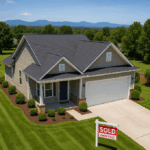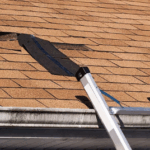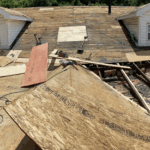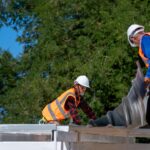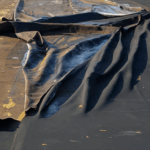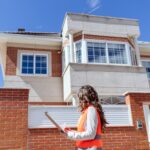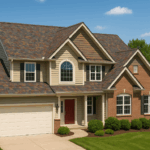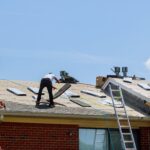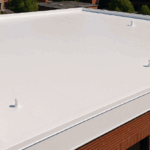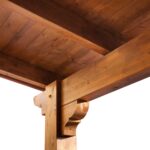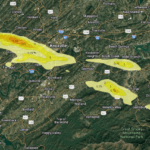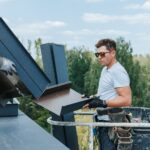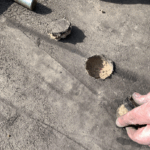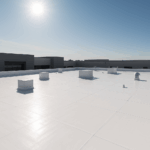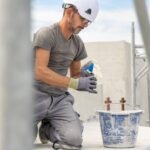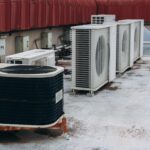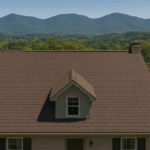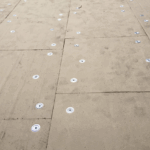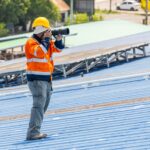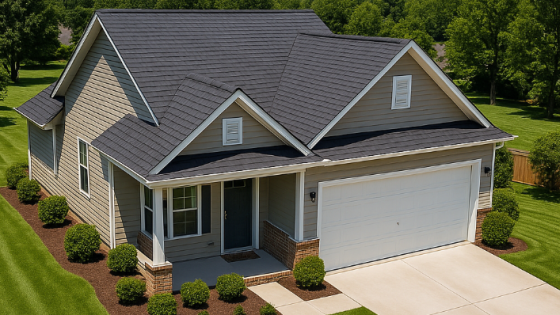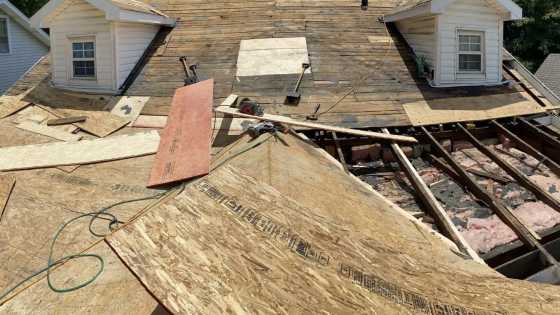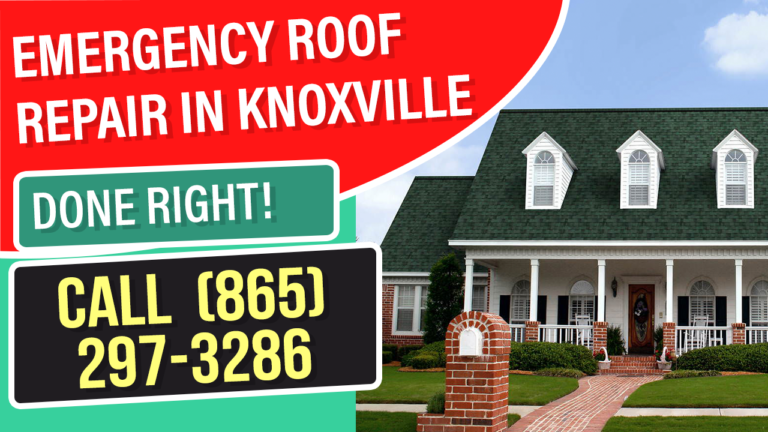If you’ve discovered mold on your roof’s old plywood sheathing, you’re likely wondering if your local roofing company can handle the removal. This is a common concern among homeowners, especially in humid climates like Knoxville, TN, where moisture buildup can lead to mold growth on roof decking, commonly made of OSB (Oriented Strand Board).
The short answer is: roofing companies are not mold remediation specialists, and while they can address mold issues structurally, they typically opt to replace moldy OSB panels rather than remove the mold itself. Here’s why, and what you can expect if you’re facing moldy roof decking.

Key Takeaways
💡Roofing Companies Are Not Mold Remediation Specialists
💡Moldy OSB Panels Are Typically Replaced, Not Cleaned
💡Professional Mold Remediation May Still Be Needed
💡Prevention Is Key After Replacement
Understanding Mold on Plywood
Mold grows where moisture is trapped — and roof decking is a prime target when there’s poor ventilation, leaking shingles, or water intrusion from storms. OSB is especially susceptible because it absorbs and retains moisture more readily than traditional plywood.
Mold not only weakens the structural integrity of the roof decking but can also impact indoor air quality if left unchecked. However, dealing with mold goes beyond a simple roofing repair — it often requires specialized remediation techniques.
What Roofing Companies Can — and Can’t — Do About Mold
1. Inspection and Identification
A roofing company will begin with a visual inspection of your roof’s underside. If mold is found on the decking, they will document the extent of the issue and determine whether the structure is salvageable. However, they do not perform mold testing or remediation in the way that environmental specialists do.
2. Replacement, Not Remediation
Roofers generally replace moldy OSB panels rather than attempt to clean or treat them. This is because:
Mold spores can penetrate deep into OSB fibers.
Cleaning mold from OSB doesn’t guarantee long-term safety or structural soundness.
Roofing companies are not licensed to handle mold remediation, which involves air filtration, spore containment, and chemical treatments.
Instead, they will remove the affected sections and install new, mold-free OSB sheathing during the repair or re-roofing process.
3. Preventative Measures After Replacement
Once the moldy OSB is replaced, reputable roofing contractors will take additional steps to prevent future mold growth, including:
Improving attic ventilation
Repairing roof leaks
Installing vapor barriers or ridge vents where needed
These steps help reduce moisture buildup, which is the leading cause of mold growth in roof decking
Why You May Still Need a Mold Remediation Specialist
If the mold has spread beyond the roof sheathing and into the attic insulation, framing, or HVAC system, you’ll need to contact a licensed mold remediation company. These professionals are equipped with:
HEPA filtration systems
Mold-specific biocides
Air quality testing equipment
Proper containment and decontamination protocols
Roofers handle the structural aspects; mold remediation experts ensure the space is safe and mold-free on a biological level.
Benefits of Professional Mold Removal
Expertise: Professional roofers have the knowledge and experience to effectively remove mold and address the underlying issues.
Safety: Mold removal can be hazardous, and professionals have the necessary safety gear and equipment to handle it safely.
Long-Term Solutions: Roofing companies provide solutions that not only remove the current mold but also prevent future growth.
FAQs about Mold Removal from Plywood
No. Roofing companies typically do not remove mold — they replace the moldy OSB panels during repair.
It depends on your insurance policy. Some policies cover mold removal if it’s due to a covered incident, like a burst pipe.
Only if the mold has spread into other parts of the attic or home. Otherwise, replacement by the roofer may be sufficient.
Yes, mold can pose health risks, especially to individuals with respiratory issues or weakened immune systems.
Mold growth is typically caused by moisture issues, such as leaks or poor ventilation.
Ensure proper ventilation, fix leaks promptly, and use mold-resistant products when possible.
OSB absorbs and retains moisture more easily, making it a more vulnerable substrate for mold growth.
Potentially, especially for individuals with allergies, asthma, or weakened immune systems.
Look for dark stains, musty odors, or signs of water damage in your attic or ceiling.
Typically one to two days, depending on the extent of the damage and accessibility.
Mold On Old Plywood
If you’re facing mold on your roof’s OSB sheathing, a roofing company can help — but only within their scope. They’ll replace damaged, moldy decking and restore the roof’s structural integrity. For a complete, safe solution to mold, especially if it’s extensive or affects your indoor air quality, contact a certified mold remediation expert.
By addressing mold problems promptly, you can protect your home’s structural integrity and ensure a healthy living environment. If you suspect mold on your roof, don’t hesitate to contact a professional roofing company for an inspection and comprehensive mold removal service.

